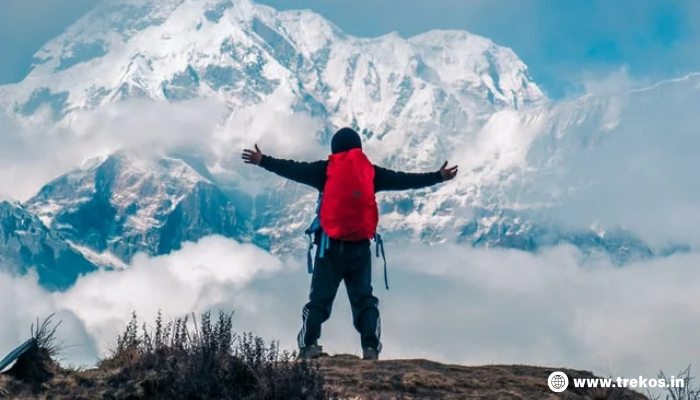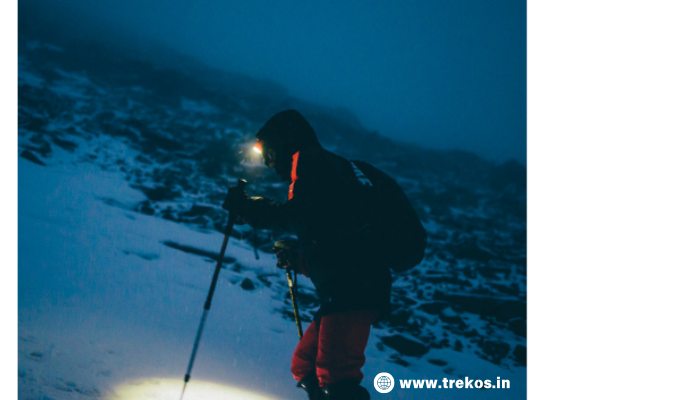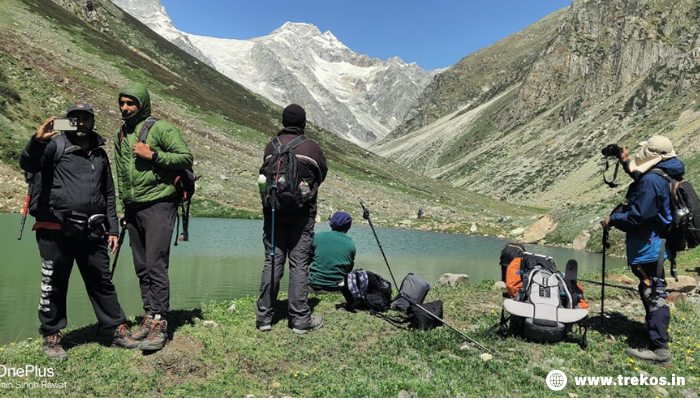Understand the Difficulty Level of Lamkhaga Pass Trek
To Understand the Difficulty Level of Lamkhaga Pass trek, it’s crucial to consider various factors. The trek’s is challenging terrain, steep ascent, and uneven path demand physical endurance. Reaching an altitude of 5,282 meters, trekkers must acclimatize to avoid altitude sickness. Understand the difficulty level of Lamkhaga Pass trek by evaluating your physical and mental fitness. Cardiovascular endurance, muscular strength, and mental toughness are essential. The trek’s unpredictable weather conditions, including snow, rain, and high winds, add to its complexity.
To successfully complete the trek, it’s vital to Understand the Difficulty Level of Lamkhaga Pass Trek. This involves assessing your technical skills, such as navigation and camping experience. Hiring a guide or joining a group trek can provide necessary support. By Understanding the Difficulty Level of the Lamkhaga Pass Trek, trekkers can prepare adequately. This includes physical training, mental preparation, and gear preparation. Understand the Difficulty Level of Lamkhaga Pass Trek to ensure a safe and successful adventure.
| Feature | Details |
| Starting Point | Harsil Valley, Uttarakhand |
| Ending Point | Chitkul, Himachal Pradesh |
| Difficulty Level | Moderate to Difficult |
| Altitude | 4,950 meters (16,240 feet) |
| Duration | 7-8 days |
| Best Time to Visit | May to June and September to October |
| Trek Distance | Approx. 90 kilometers |
Altitude
The Lamkhaga Pass Trek reaches an altitude of 5,282 meters (17,320 ft), which can cause altitude sickness. Climbing to high altitudes too quickly can lead to headaches, nausea, and fatigue. To Understand the Difficulty Level of Lamkhaga Pass Trek, trekkers must consider the altitude gain and allow time for acclimatization.
Terrain
The trek features steep ascents, rocky paths, and uneven terrain, making it physically demanding. Trekkers must navigate through dense forests, cross rivers, and climb steep ridges. Understand the Difficulty Level of Lamkhaga Pass Trek by recognizing the terrain’s challenges.
Distance
The Lamkhaga Pass Trek spans approximately 90 km (56 miles) over 7-9 days. Daily distances range from 10-15 km (6-9 miles), with steep ascents and descents. The trek’s remote location and rugged terrain increase its difficulty, requiring trekkers to be physically fit and mentally prepared.
Weather
The Lamkhaga Pass Trek’s weather is unpredictable and challenging, with trekkers facing sub-zero temperatures (-10°C to -20°C), heavy snowfall (June-July and Sept-Oct), rainfall (May-June and Sept-Oct), and high winds (40-60 km/h). Limited sunlight in October and November adds to the difficulty. The best time to trek is during spring (May-June) and autumn (Sept-Oct), while monsoon season (July-Aug) and harsh winter (Dec-Feb) should be avoided due to increased risk of landslides, avalanches, and extreme cold. Unpredictable weather conditions, including snow, rain, and high winds, can make the trek more challenging. Understand the Difficulty Level of Lamkhaga Pass Trek by preparing for extreme weather conditions.
Technical Requirements
The trek requires technical expertise, including crampons and ice axe usage, rappelling and rope fixing, glacier traversal, and river crossings. Trekkers should also possess high-altitude navigation skills, crevasse rescue knowledge, and first aid and emergency response training. Additionally, map reading and GPS skills are essential. Due to its challenging terrain, prior trekking experience and guide accompaniment are highly recommended to ensure a safe and successful adventure.
Physical and Mental Requirements

Understand the difficulty Level of Lamkhaga Pass Trek, trekkers must consider physical requirement, including cardiovascular endurance, muscular strength, and flexibility. Climbing steep ascents and navigating uneven terrain demands high physical fitness. Trekkers need mental toughness to cope with altitude sickness, physical exhaustion, and unpredictable weather. Mental Preparation is crucial to understand the difficulty Level of Lamkhaga Pass Trek. Trekkers must develop resilience, focus, and adaptability to overcome challenges. A Positive mindset and stress management skills are essential. Physically, trekkers should have prior high-altitude experience and be comfortable with rugged terrain. To understand the difficulty level of Lamkhaga Pass Trek, assess your physical and mental limitations.
Understand the difficulty level of Lamkhaga Pass Trek to ensure a safe and successful adventure, requiring careful evaluation of physical and mental readiness.
Preparation and Planning

Understand the Difficulty Level of Lamkhaga Pass Trek, thorough preparation and planning are essential. Trekkers must research the route, climate, and potential hazards. Physical training, at least 3-4 months prior, is vital to build cardiovascular endurance and muscular strength. A well-planned itinerary, including acclimatization days, helps trekkers Understand the Difficulty Level of Lamkhaga Pass Trek. Packing essential gear, such as trekking poles, crampons, and warm clothing, is crucial. Trekking with experienced guides or joining a group trek can provide valuable support.
To Understand the Difficulty Level of Lamkhaga Pass Trek, assess your technical skills and prepare accordingly. Effective planning enables trekkers to Understand the Difficulty Level of Lamkhaga Pass Trek, ensuring a safe and successful adventure.
Recommendation

For inexperienced trekkers, hiring a certified guide or joining a reputable group trek is highly advised. This ensures access to expert knowledge, logistical support, and emergency assistance. Physically, trekkers should engage in cardiovascular training and strength-building exercises at least 3-4 months prior. Mental preparation through meditation, yoga, or mindfulness practices can enhance resilience. Trekking poles, crampons, and warm clothing are essential gear. Acclimatization days should be built into the itinerary. Prior high-altitude experience and knowledge of navigation, first aid, and camping skills are beneficial.
Conclusion
Understand the Difficulty Level of Lamkhaga Pass Trek is crucial for a safe and successful adventure. This challenging trek demand physical endurance, mental toughness, and technical skills. With an altitude is 5,282 metres, steep ascents, unpredictable weather, trekkers must be well-prepared. Physical training, mental preparation and gear preparation are essential. Acclimatization, navigation skills, and camping experience are also vital. Hiring a guide or joining a group trek can provide valuable support. By assessing physical and mental limitation, trekkers can overcame challenges. Effective planning, research, and preparation, enable trekkers to tackle of the Lamkhaga Pass Trek with confidence. Understand the Difficulty Level of Lamkhaga Pass Trek ensures the trilling yet safe experience amidst the breathtaking the Himalayan landscape.
FAQ’s
Q1 How Difficult is the Lamkhaga Pass Trek ?
Ans The lamkhaga Pass Trek is challenging, with a difficulty level 5-6.
Q2 What is the highest altitude reached on the trek ?
Ans The highest altitude reached is 5,282 metres (17,320 ft).
Q3 What are the essential physical requirement for the trek ?
Ans Cardiovascular endurance, muscular strength and mental toughness.
Q4 How long does it take to complete the trek ?
Ans The Lamkhaga Pass Trek complete in 7-9 days.
Q5 Do, I need a guide for Lamkhaga Pass Trek ?
Ans Yes, recommended for inexperienced trekkers or those unfamiliar with the region.













